You seem to have missed ITER off the list. That may be because you can't decide which estimate of the cost (currently) to use, but the lowest estimate, by ITER itself is £22Bn. The more realistic costs are between £45Bn and 65Bn. It is only a research project, and has already been overtaken by a number of other large-scale fusion ressearch project, none of which have cost anything like ITER.
Ranked: Europe's most expensive megaprojects
Europe's biggest megaprojects under construction
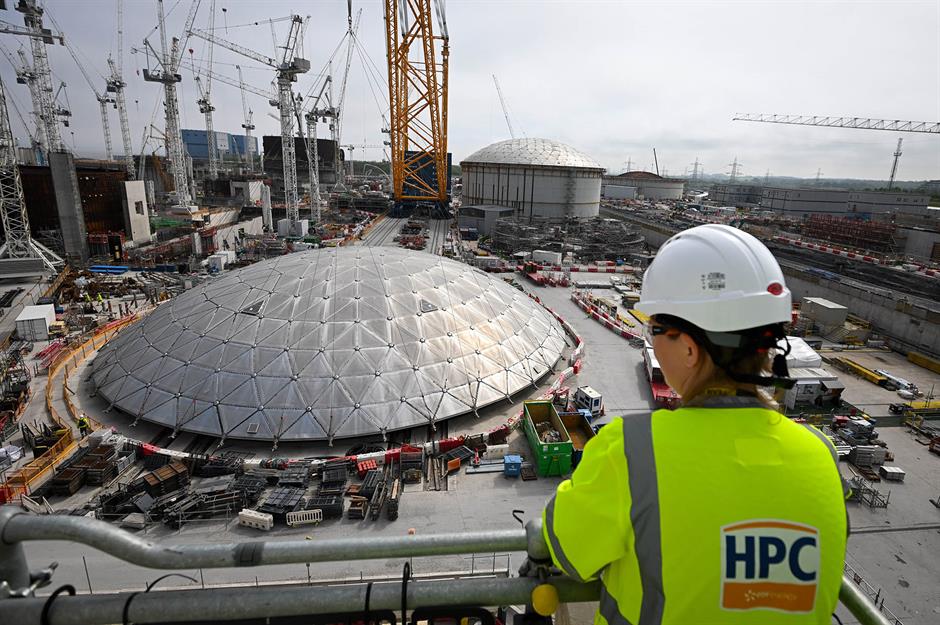
Across Europe, governments are spending billions of dollars to update public transport and improve energy provision. Many of these projects are complex feats of engineering, constructing bigger, longer, and deeper infrastructure, the likes of which have never been seen before.
But Rome wasn't built in a day, as the saying goes, and these massive megaprojects come with outsized price tags that often grow well beyond their original budgets.
Read on to find out discover where the biggest projects are underway in Europe, ranked from least to most expensive, and find out whether they'll be delivered on time and to budget. Spoiler alert: lots won't be...
All dollar amounts in US dollars.
Athens Metro Line 4, Greece: $3.5 billion (£2.7bn/€3.3bn)
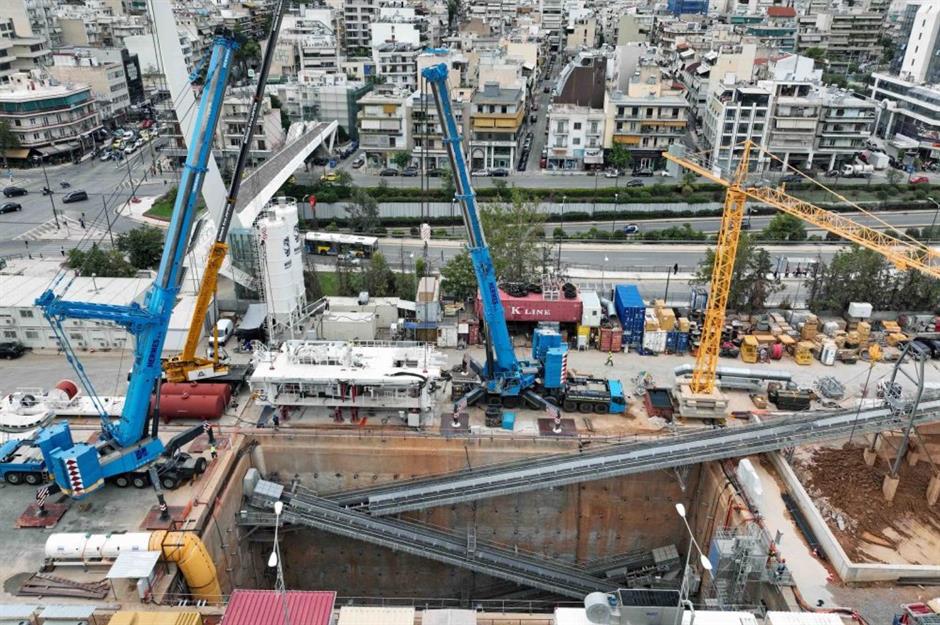
Athens’ first metro line dates back to 1869, making it one of the oldest worldwide. However, it was 130 years later before Lines 2 and 3 opened to the public. Eager to regain momentum, the government is working on its fourth line, which will be 24 miles (38km) long and boast 35 new stations.
The U-shaped line will be built in five sections. A contract was awarded in June 2021 to construct Section A, which will cover the first 8 miles (12.8km) and 15 underground stations. Estimates in 2019 suggested the total cost for all five sections would be $3.5 billion (£2.7bn/€3.3bn), with $1.6 billion (£1.3bn/€1.5bn) for Section A alone. But the project has already seen numerous setbacks...
Athens Metro Line 4, Greece: $3.5 billion (£2.7bn/€3.3bn)
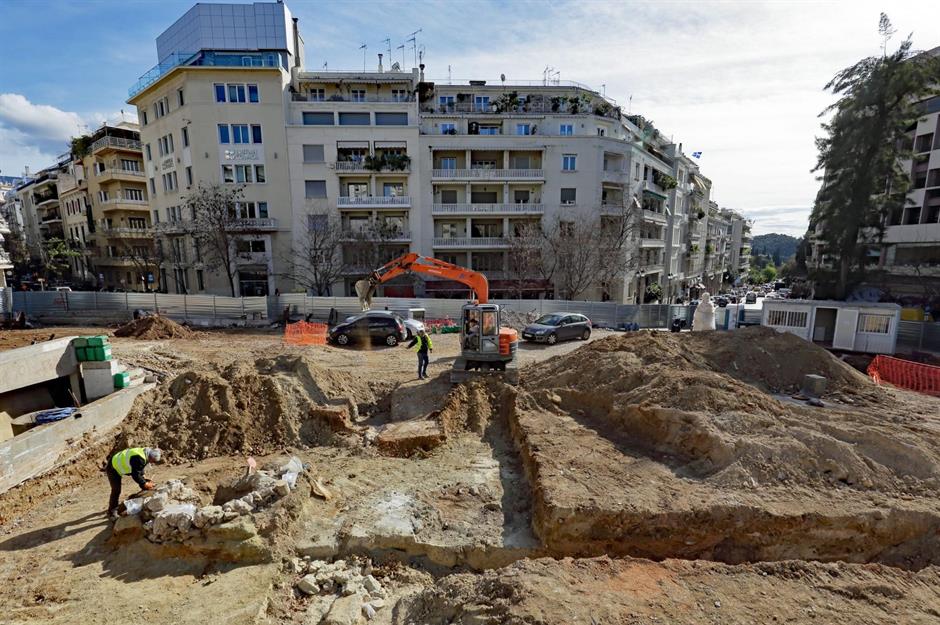
Section A is being built through a very densely populated section of the city – but Athens' current residents aren't the only factor complicating the construction.
As you might expect, the ground that needs to be cleared for the project is filled with hidden archaeological treasures, as well as extensive utilities. These stumbling blocks have caused delays and although Line 4 was initially scheduled for completion in 2029 or 2030, the project is reported to be at least one year behind schedule, prompting the contractors involved in the build to seek millions of euros in compensation.
Semmering Base Tunnel, Austria: $4.1 billion (£3.3bn/€3.9bn)
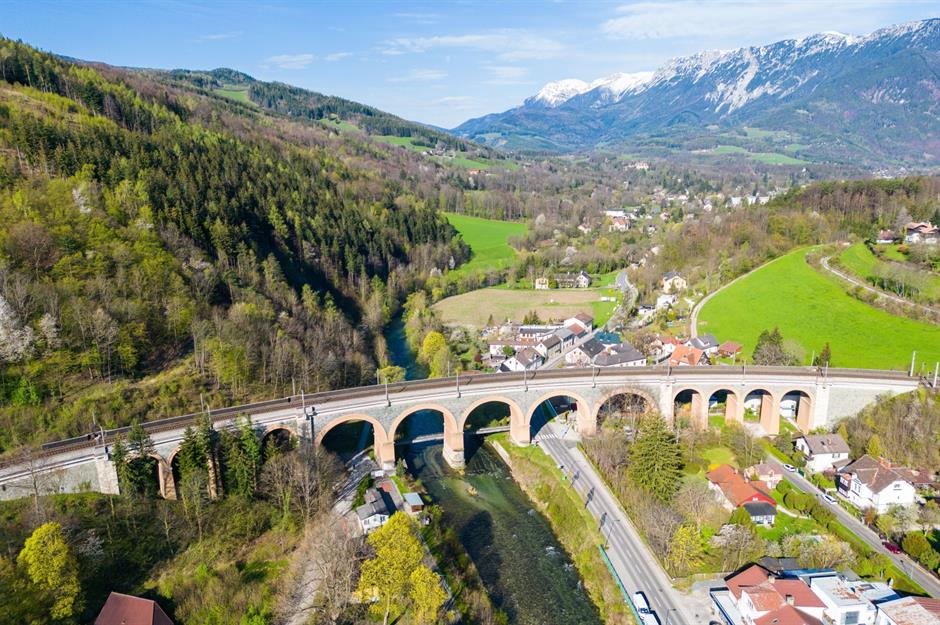
The existing “Semmeringbahn” is the world’s oldest mountain rail line, dating back 170 years and still serving upwards of 180 trains each day. A new bypass tunnel is under construction to relieve a portion of the historic railway and is currently expected to be in operation by 2030.
The new line will connect Gloggnitz in Lower Austria to Mürzzuschlag in Styria, with the tunnel construction divided into three sections necessitating up to 14 simultaneous excavations. Clearly, building this mountain tunnel is a monumental task. What could go wrong...?
Semmering Base Tunnel, Austria: $4.1 billion (£3.3bn/€3.9bn)
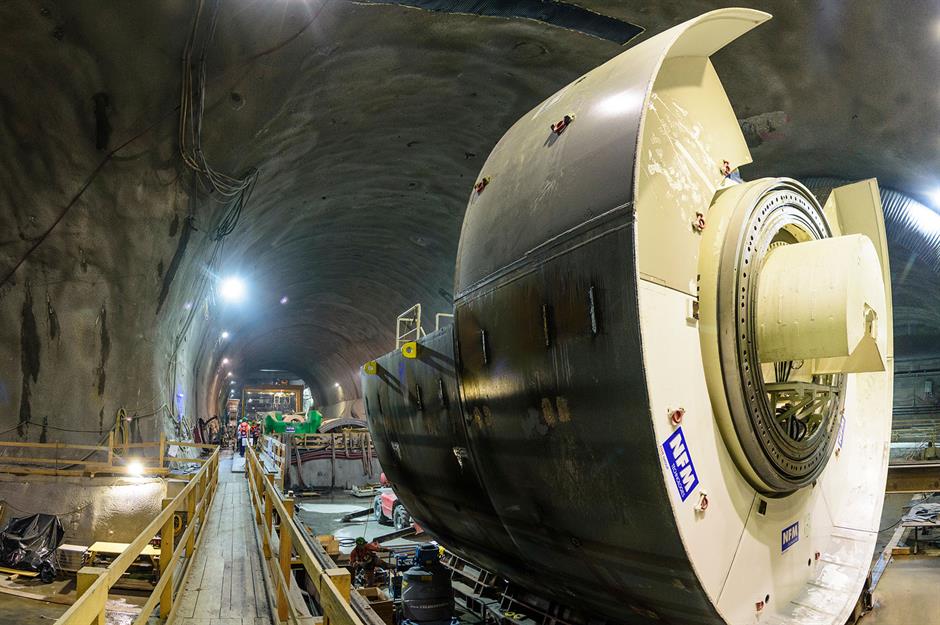
Construction started on the 17-mile-long (27km) rail line in April 2012. The project requires excavating a total of 39 miles (62km) of tunnels and shafts as deep as 1,300 feet (400m) through complex geology.
It's been more than a decade since work began. Everything from geological faults to the skyrocketing cost of materials has caused the original 2026 completion date to be pushed back, while the overall project price tag has risen from $3.5 billion (£2.3bn/€3.3bn) to $4.1 billion (£3.3bn/€3.9bn).
Basque Y, Spain: $4.4 billion (£3.4bn/€4.2bn)

This new high-speed rail line in Spain gets its name, Y Vasca or Basque Y, from its three-prong route connecting the capitals of the Basque Country region (Bilbao, Donostia-San Sebastian and Vitoria-Gasteiz). Covering a total of 113 miles (182km) that will be used by both freight and passenger rail, 13 sections have already been built with another six still to be constructed.
The majority of these rail lines are in tunnels through the region’s mountains and viaducts through intervening valleys. But the dramatic Spanish landscape isn't the only hurdle the megaproject has faced...
Basque Y, Spain: $4.4 billion (£3.4bn/€4.2bn)
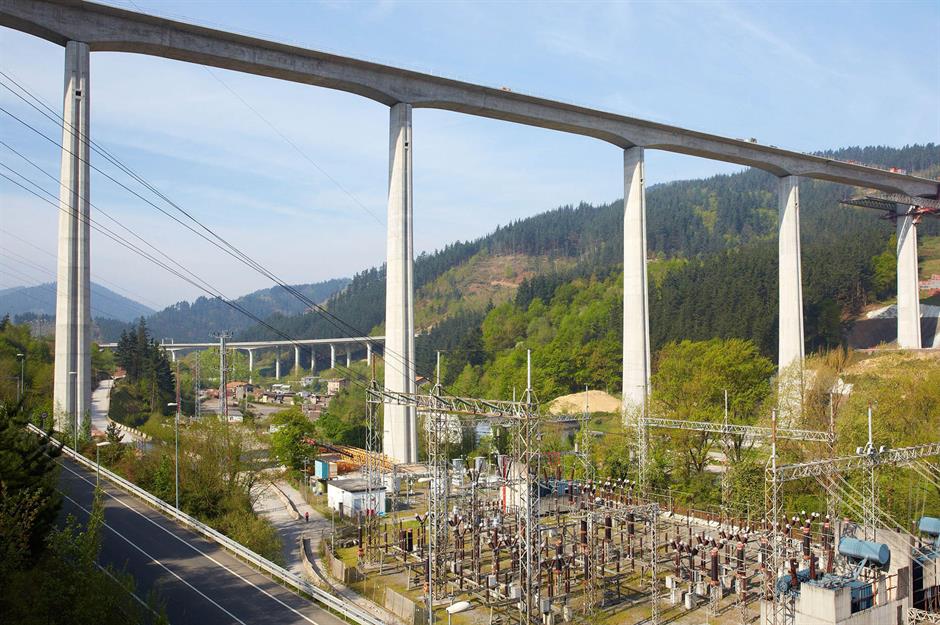
The Basque and Spanish governments entered a project agreement for the Basque Y in 2006, with service forecasted for 2017 at an estimated total cost of $4.4 billion (£3.4bn/€4.2bn). While construction did start that year, the megaproject has experienced continuous delays ever since, largely due to governmental disagreements on funding but also due to terrorist attacks, protests and corruption and bribery probes.
The European Investment Bank offered a $1.5 billion (£1.2bn/€1.4bn) billion loan to the project in 2017, with the final portion distributed in July 2024. However, the rail line is not expected to be fully operational until 2027 at the earliest, a decade later than originally planned. Updated project costs have not been revealed, though the Basque government did report a segment of the line through Gipuzcoa – that started in 2008 and wrapped up construction in 2023 – cost $2.1 billion (£1.6bn/€1.95bn) alone, nearly half the original budget.
Lisbon-Porto High-Speed Rail Line: Portugal, $4.8 billion (£3.7bn/€4.5bn)
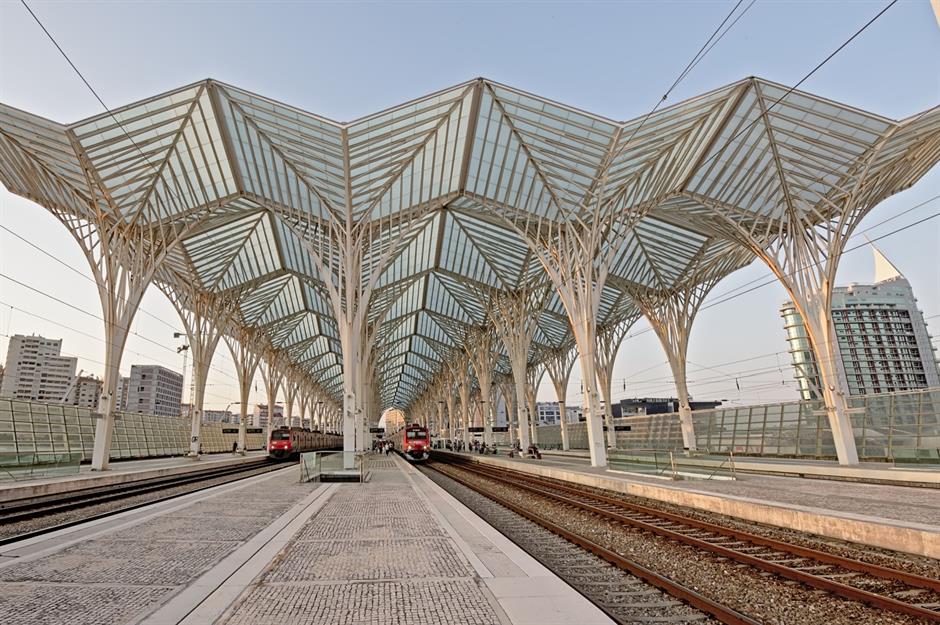
It’s still early days for the construction of the Lisbon-Porto High Speed Rail Line, which was unveiled by the Portuguese government in 2022 and will stretch almost 186 miles (300km). Linking the existing Porto-Campanhã and Lisbon-Oriente stations, the completed line will reduce travel time from 2 hours 50 minutes to 1 hour and 15 minutes, connecting to key cities along the route.
The ambitious project, which will be built in three phases over the next decade, has an initial budget of $4.8 billion (£3.7bn/€4.5bn).
Lisbon-Porto High-Speed Rail Line: Portugal, $4.8 billion (£3.7bn/€4.5bn)
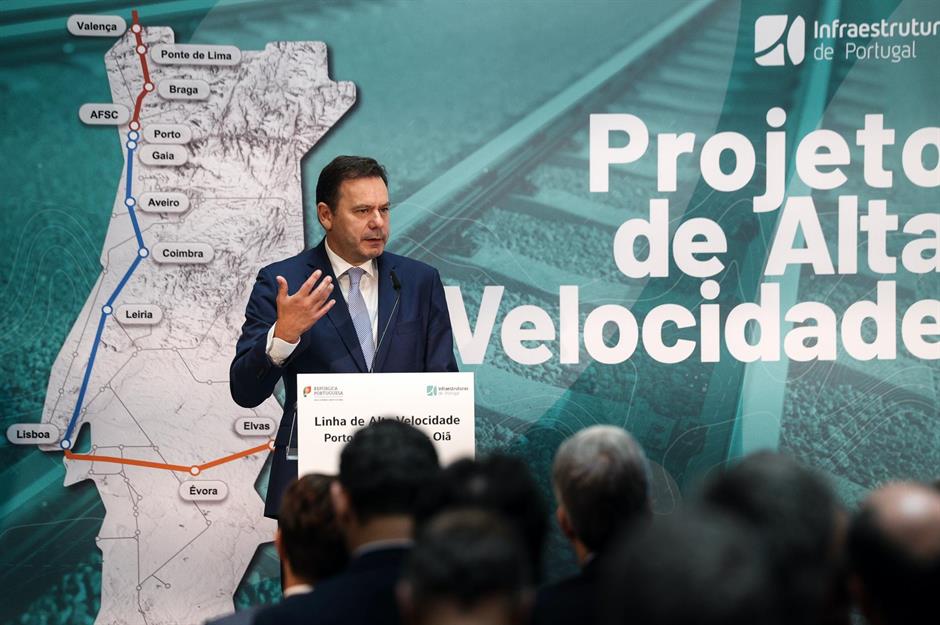
The project’s first phase is divided into two contract packages. In October 2024, the Portuguese government announced it had awarded the first contract, a $1.7 billion (£1.3bn/€1.6bn) public-private partnership to design, build and maintain 44 miles (71km) of railway, numerous tunnels, bridges and viaducts. An existing station will also be updated and a new underground station will be built.
Construction is expected to start in 2025 for the first phase, considered to be the most expensive due to the tunnel and bridge work required. The Portuguese government tendered the second package of phase one in July 2024 for another 44 miles (71km) and expects to award the contract in January 2025. The second and third phases are scheduled for 2027 and 2030, respectively.
Will the project be completed by the deadline and on budget? Only time will tell.
Naples-Bari High-Speed Railway Line, Italy: $6.7 billion (£5.2bn/€6.3bn)
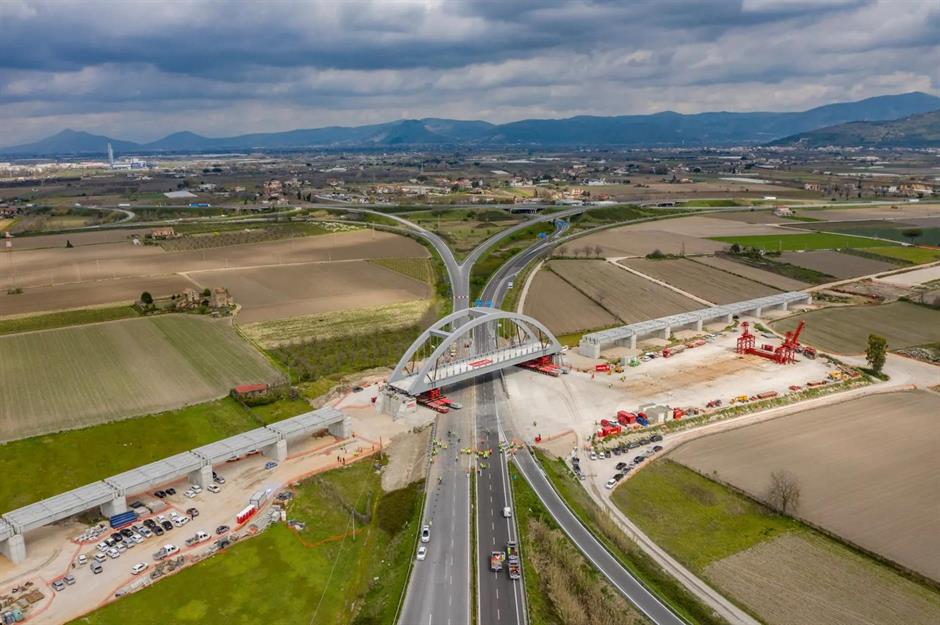
Stretching across southern Italy, a massive railway infrastructure upgrade of the current Naples to Bari route will enable the line to be integrated into the EU’s Scandinavia-Mediterranean Core Corridor.
Work is underway to increase speeds to a maximum 124 miles per hour (200km/h), double sections of single track, and eliminate surface level crossings along 93 miles (150km) of rail.
Naples-Bari High-Speed Railway Line, Italy: $6.7 billion (£5.2bn/€6.3bn)
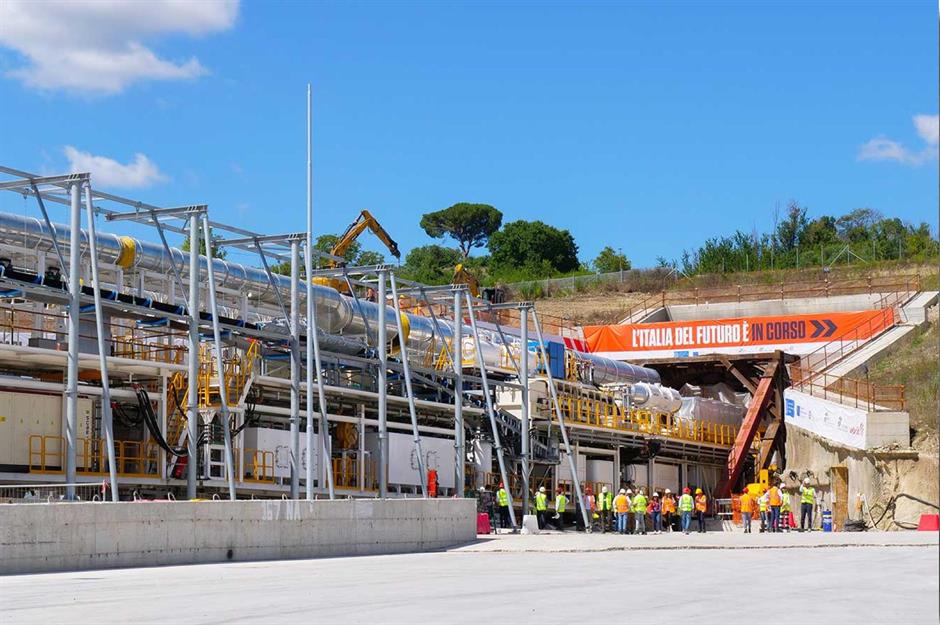
Approximately half of the line is being built in tunnels and there are also plans to construct a whopping 25 new viaducts. The design process for all this heavy civil construction started in 2015, and it's being delivered across numerous contracts in various phases of completion.
Currently, the project is expected to finish in 2028, a year later than planned, and will cost $6.7 billion (£5.2bn/€6.3bn).
Oosterweel Link, Belgium: $10.6 billion (£8.3bn/€10bn)
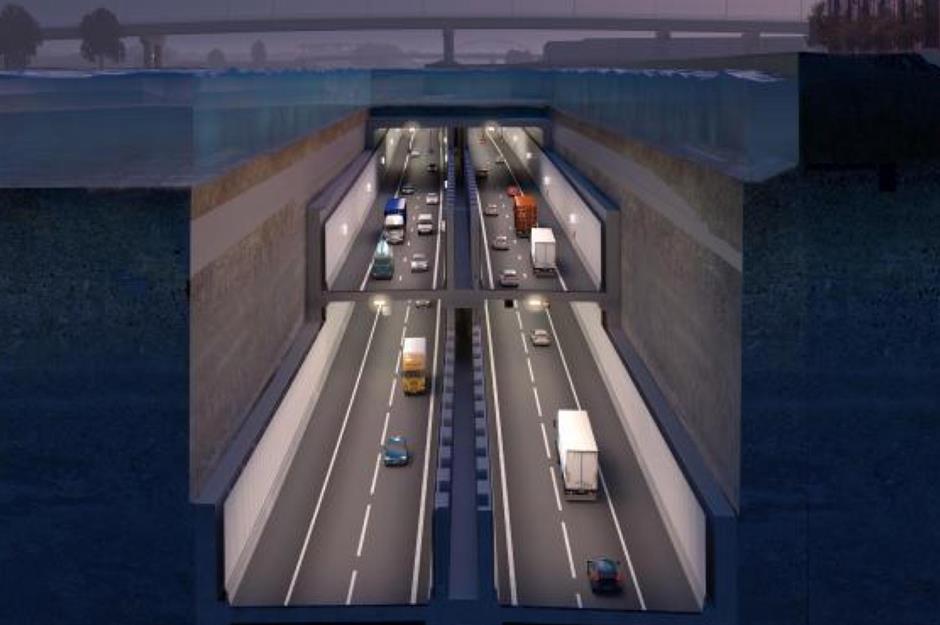
Completing the ring road around Antwerp, the idea for this nine-mile (15km) motorway dates back to the 1990s, though the project only broke ground in 2017.
It entails far more than just building a road. There is an immersed tube tunnel under the Scheldt River, stacked tunnels under the Albert Canal (the picture shows an artist's render) and trench construction for subsurface road infrastructure that will free up green space in the city.
Oosterweel Link, Belgium: $10.6 billion (£8.3bn/€10bn)
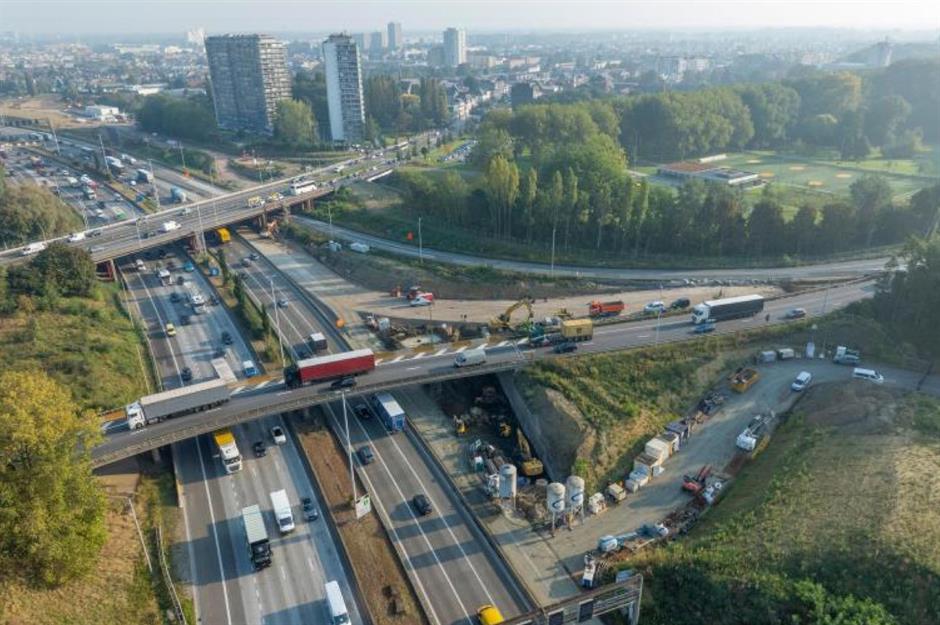
Initially the works had a 2025 completion date. However, the design underwent significant changes in 2017, which both increased the price and pushed back the schedule, delaying the opening date to 2030.
Since then, the cost has dramatically risen again. This is due to external pressures from COVID-19 and the war in Ukraine impacting construction prices, plus changing regulations for permits and the discovery of forever chemicals known as PFAs in the soil that need to be remediated. Now, the project is expected to cost at least $10.6 billion (£8.3bn/€10bn) and potentially not open until 2033. Watch this space...
SuedLink Grid Expansion, Germany: $10.6 billion (£8.3bn/€10bn)
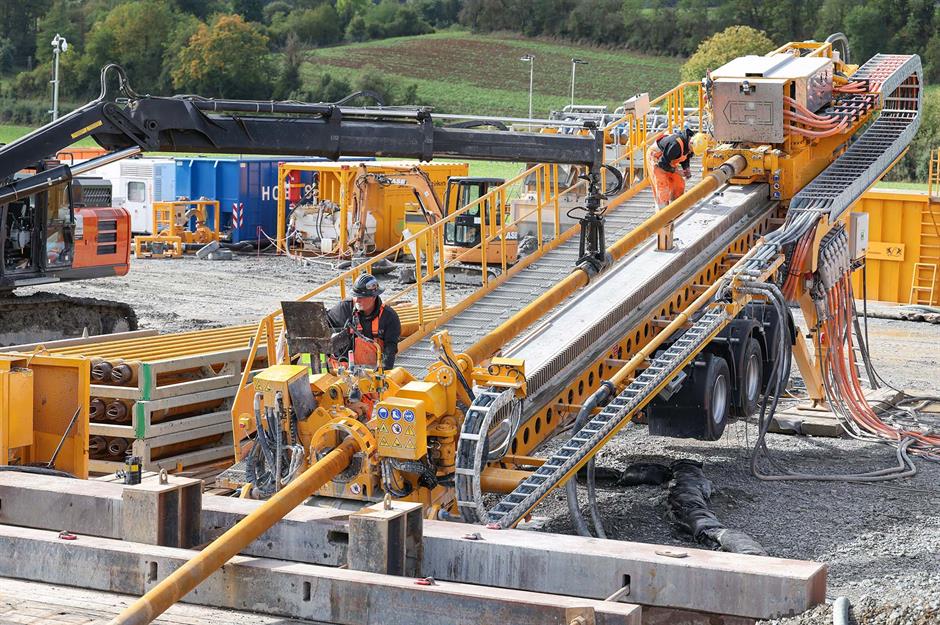
Aiming to generate all its energy from renewable sources by 2035, Germany is investing heavily in wind power and has launched a $10.6 billion (£8.3bn/€10bn) programme to upgrade its power grid in preparation.
SuedLink will be a 435-mile (700km) underground cable line, the longest in the world, connecting wind power in the North Sea to Bavaria and Baden-Württemberg in the south by 2028.
SuedLink Grid Expansion, Germany: $10.6 billion (£8.3bn/€10bn)

The brains behind SuedLink have perhaps learned from the heavy delays that have plagued many of the megaprojects on this list. Hoping to ensure the expansion would be completed on time, the project tendered billions of euros worth of orders for the cables back in 2020, even though it was only in the preliminary design phases at the time.
In September 2023, the project broke ground on a three-mile (5km) tunnel under the Elbe River between Wewelsfleth in Schleswig-Holstein and Wischhafen in Lower Saxony. This is one of the most complex structures required for the SuedLink, with the tunnelling scheduled to start imminently.
The German Federal Network Agency also approved a contract for another 23 miles (38km) of cable installation in 2024.
Fehmarnbelt Fixed Link, Denmark/Germany: $10.6 billion (£8.3bn/€10bn)
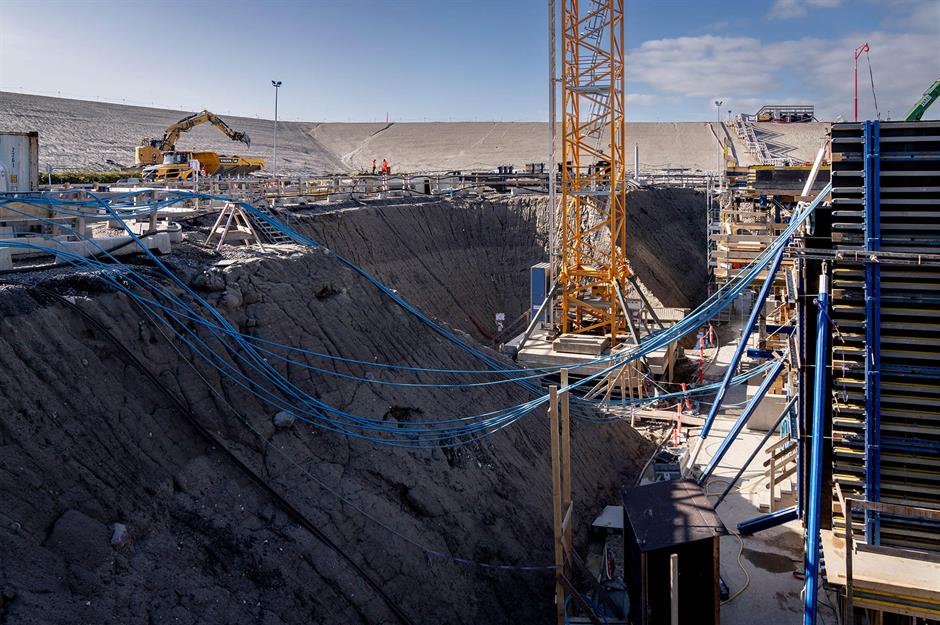
When completed, the Fehmarnbelt Fixed Link will be the world’s longest submerged tunnel at 11 miles (18km) long. This combined rail and road megaproject will connect Rødbyhavn on Lolland in Denmark with the island of Fehmarn in Germany across the Fehmarnbelt and dramatically cut travel time.
Currently, a ferry journey takes 45 minutes and is limited by weather, whereas the tunnel can be traversed in 10 minutes by car and 7 minutes by train. It will also be open 24 hours a day.
Fehmarnbelt Fixed Link, Denmark/Germany: $10.6 billion (£8.3bn/€10bn)
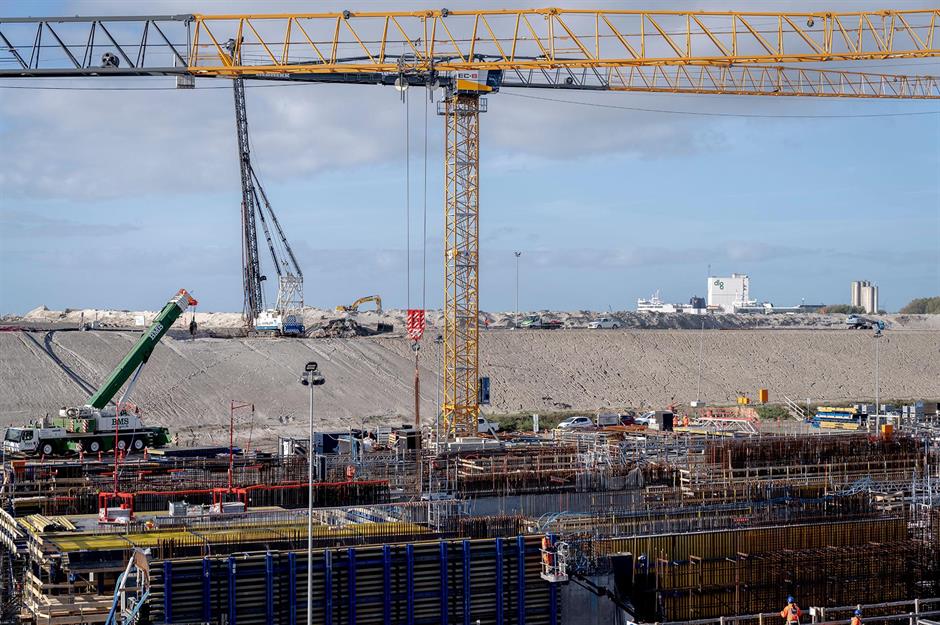
After 10 years of planning, construction started in 2020 and the tunnel is scheduled to open in 2029. Along with digging the seabed trench and lowering the submersible tunnel elements, the project includes new facilities on both the Danish and German sides of the tunnel and upgrades for existing rail tracks to accommodate high-speed trains.
Denmark is overseeing the work and footing the bill, which is $10.6 billion (£8.3bn/€10bn), with EU and German contributions. It's the biggest infrastructure project in the kingdom's history, and rail and road tolls will help cover the costs once operational.
Brenner Base Tunnel, Austria/Italy: $11.1 billion (£8.8bn/€10.5bn)
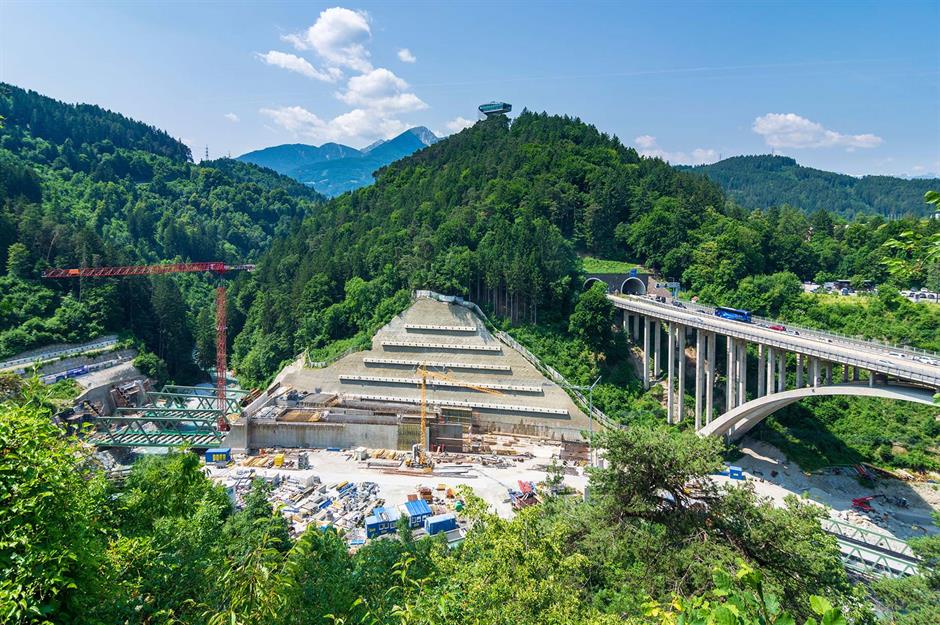
Another record-breaking tunnel is being constructed deep underground through the Alps. Once the Brenner Base Tunnel is completed, it will be the world’s longest underground railway at 40 miles (64km).
While there is an existing rail connection, it actually follows a route up the mountain at such steep slopes that it requires two or three locomotives, making it a less competitive option. Unsurprisingly, the Brenner Pass is one of the busiest mountain crossings in Europe, seeing more than 2.5 million trucks, 14 million vehicles, and 50 million tonnes of goods each year. With a new rail connection, much of this traffic can travel 1,900 feet (580m) underground in passenger and freight rail services.
Brenner Base Tunnel, Austria/Italy: $11.1 billion (£8.8bn/€10.5bn)

The idea for connecting Italy and Austria below the Brenner Mountain Pass can be traced back to Italian engineer Giovanni Qualizza in 1847. However, the construction didn’t start until 2007, following 30 years of commissioning studies, planning and design.
While the tunnelling works have made substantial progress, the project has also met highly complex geology along the route, with one boring machine getting trapped in a fault for several months in 2023.
Initial plans had scheduled commissioning for December 2026, but after a decade of construction, that deadline has moved to 2032. Likewise, the total cost has changed; it's now estimated at $11.1 billion (£8.8bn/€10.5bn).
Palermo-Catania-Messina Railway Line, Italy: $11.6 billion (£9.2bn/€11bn)
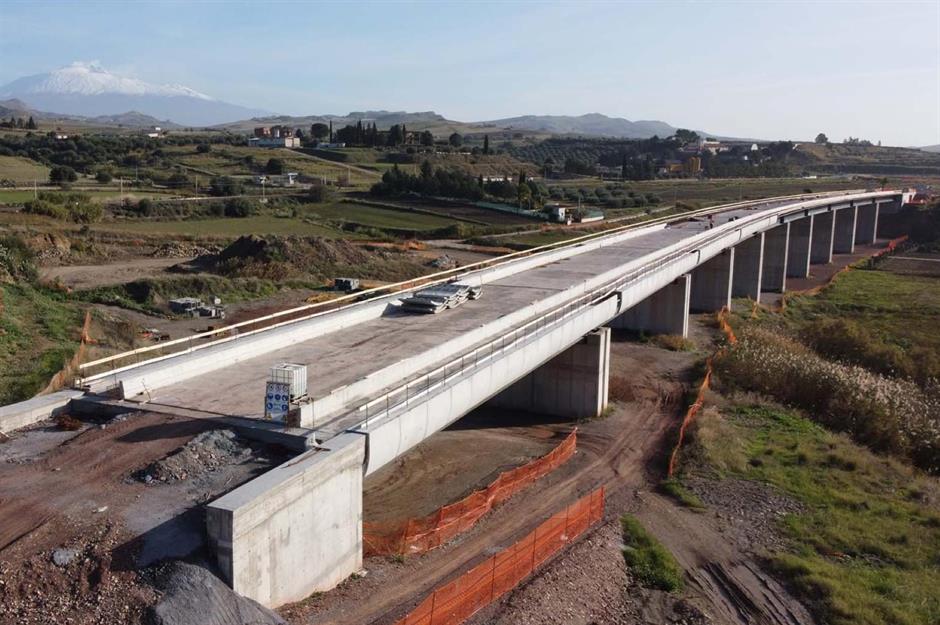
Improving connections across the island of Sicily, a massive upgrade to 110 miles (178km) of railway linking Palermo and Catania is under construction. The works will improve train services by increasing both speed and capacity, reducing travel time between the two cities by a third from three hours to two.
Sections of the historic railway will remain intact with additional tracks added, and due to the region’s hilly terrain, the project includes lengthy construction of tunnels and viaducts.
Palermo-Catania-Messina Railway Line, Italy: $11.6 billion (£9.2bn/€11bn)

Construction broke ground in 2018 for the modernisation megaproject, which is being built across six phases, the last of which started work in 2023.
The total cost has been estimated at $11.6 billion (£9.2bn/€11bn) and the various construction lots have phased delivery dates, with several scheduled to reach completion as early as 2025. However, the entire project won’t be operational until 2029.
Stuttgart 21, Germany: $11.6 billion (£9.2bn/€11bn)
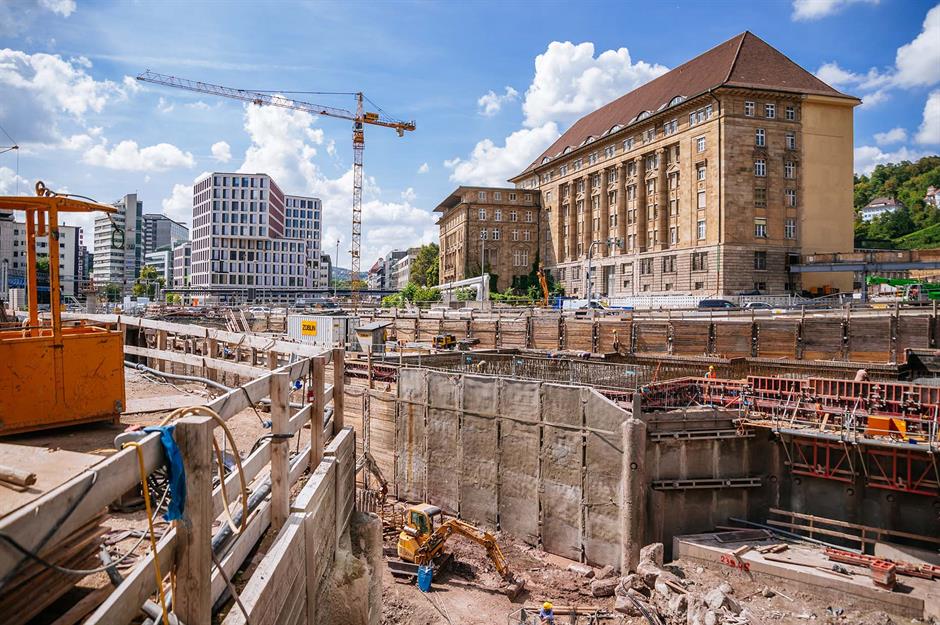
A major rail modernisation programme is also underway in southern Germany. The Stuttgart 21 project dates back to 1994, when the initial plans forecasted it would cost $2.6 billion (£2.1bn/€2.5bn). Connecting Stuttgart and Ulm, the infrastructure includes 35 miles (56km) of tunnels, 42 bridges, four new stations and 62 miles (100km) of new track.
The project officially broke ground in 2010, but it's been plagued by unexpected delays and expenses that have sent the cost of this megaproject spiralling out of control.
Stuttgart 21, Germany, €11 billion ($11.6/£9.2bn)
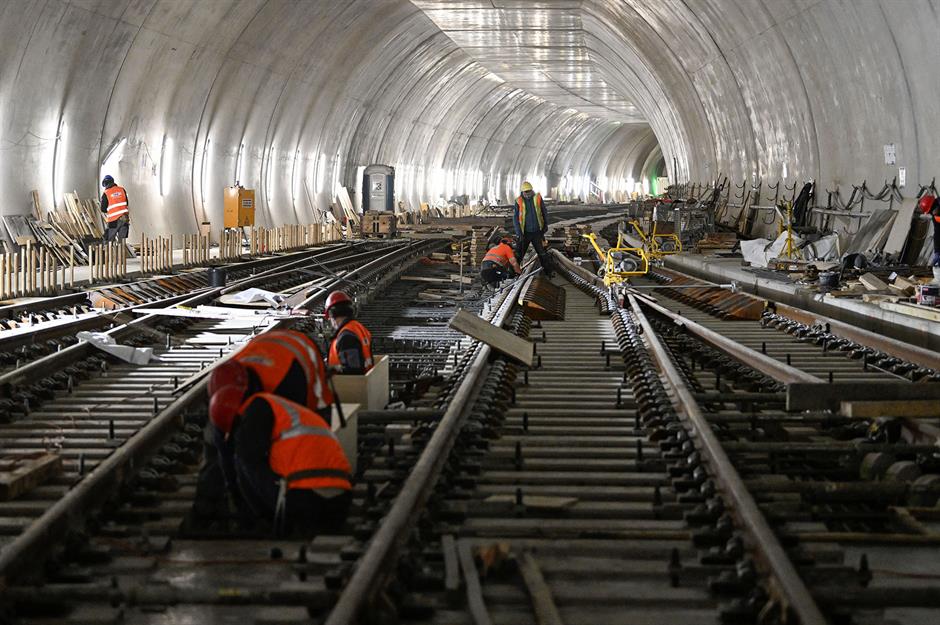
Blowing past the initially scheduled project completion date of 2019, the tunnelling alone only finished in 2023. It was hoped the project would be operational by late 2025, but more recent estimates place the opening date in December 2026. Even then, the main station won't be fully finished.
Now priced at €11 billion ($11.6/£9.2bn), the project has become bogged down in lawsuits over who'll shoulder the cost of these delays.
Coastal highway E39, Norway: $47 billion (£37bn/€44bn)
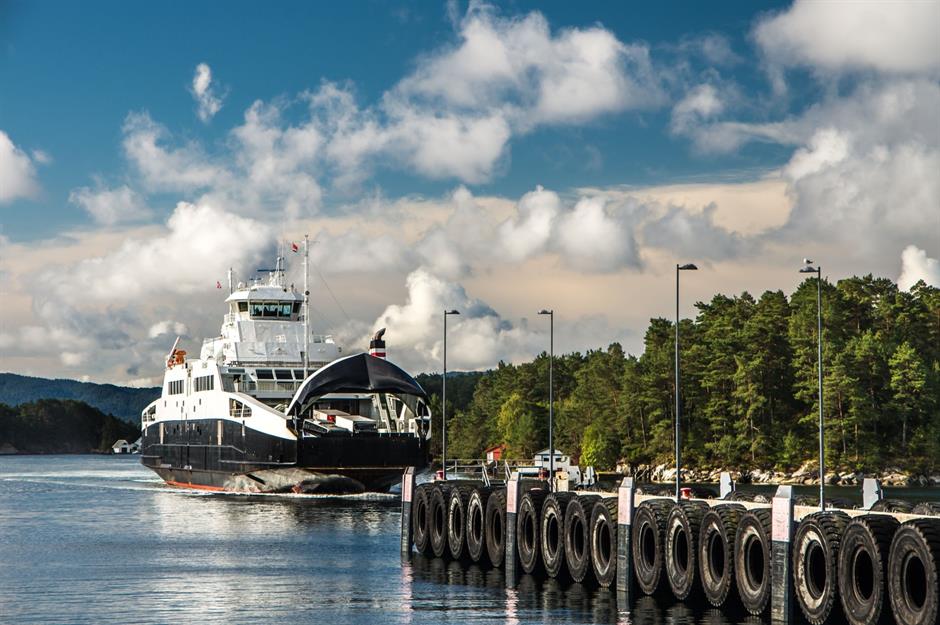
Travelling Norway’s rugged western coastline is an extensive and time-consuming journey. The cities of Kristiansand in the south and Trondheim in the north are currently connected by a road route that’s 683 miles (1,100km) long, requires seven ferry crossings, and takes around 21 hours.
The Norwegian transportation authority Statens Vegvesen has an ambitious goal of halving this with a new route using tunnels and bridges to replace the ferries.
Coastal highway E39, Norway: $47 billion (£37bn/€44bn)
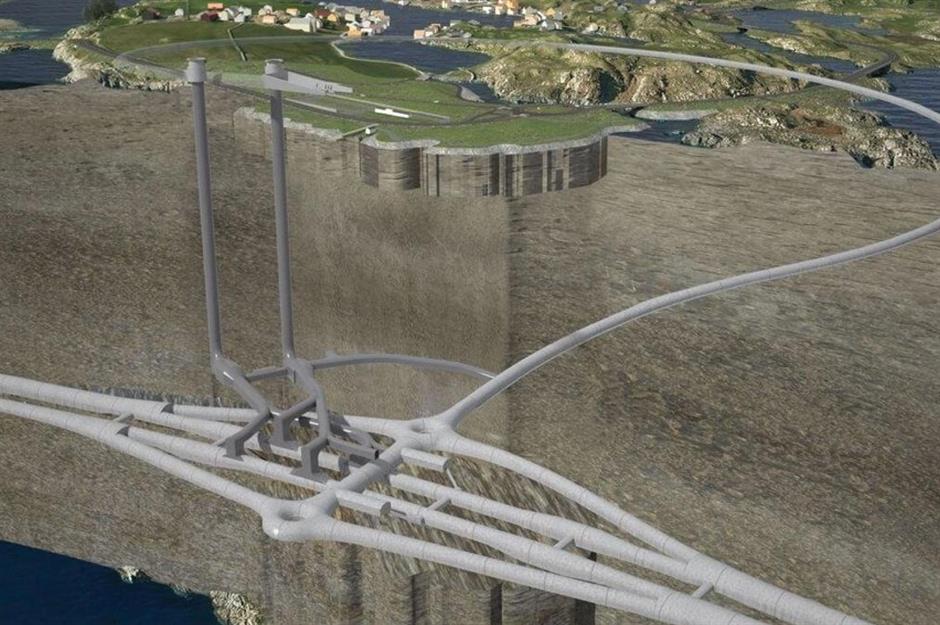
At the beginning of 2020, only around 10% of the planned work for this multi-project programme was completed. In April of that year the agency reached a milestone when the Eiganes tunnel in Stavanger opened.
Construction is ongoing for the 17-mile-long (27km) Rogfast tunnel (artist’s render pictured), which will be the world’s longest subsea road tunnel and the deepest at 1,285 feet (392m). Other crossings are in various stages of planning and approval.
Current estimates suggest the entire undertaking will cost $47 billion (£37bn/€44bn). However, with many of the crossings yet to tender, that figure could likely change.
Grand Paris Express, France: $45 billion (£36bn/€42.5bn)
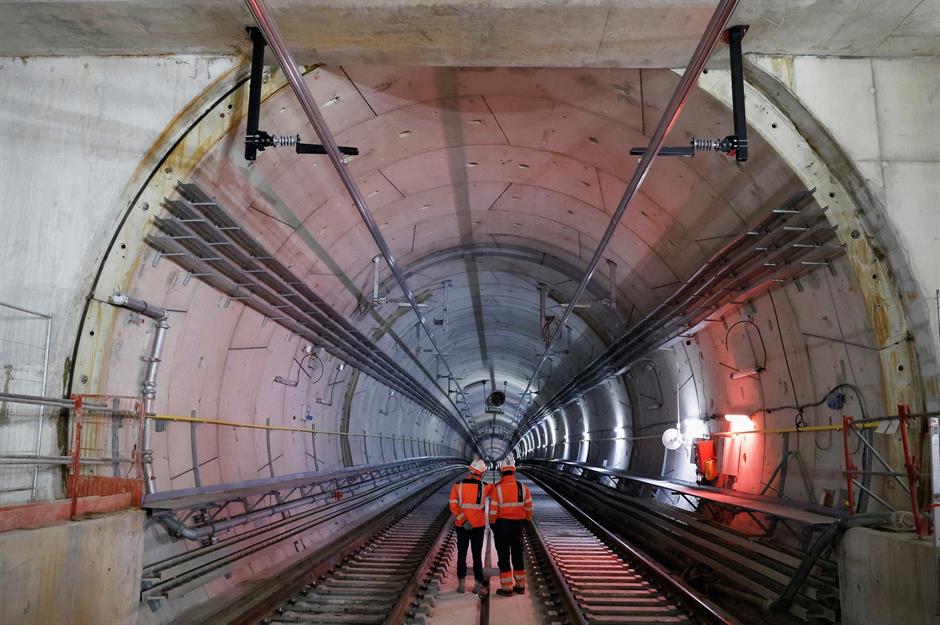
The Grand Paris Express project involves extending an existing metro line and building four new ones – a massive undertaking that adds up to 124 miles (200km) of track and 68 stations, effectively doubling the size of the city’s historic metro network.
Construction started in 2015 and a significant portion of the new track, 75%, is being built in tunnels excavated below the city. The new and extended lines will enter service in stages between 2025 and 2030.
Grand Paris Express, France: $45 billion (£36bn/€42.5bn)
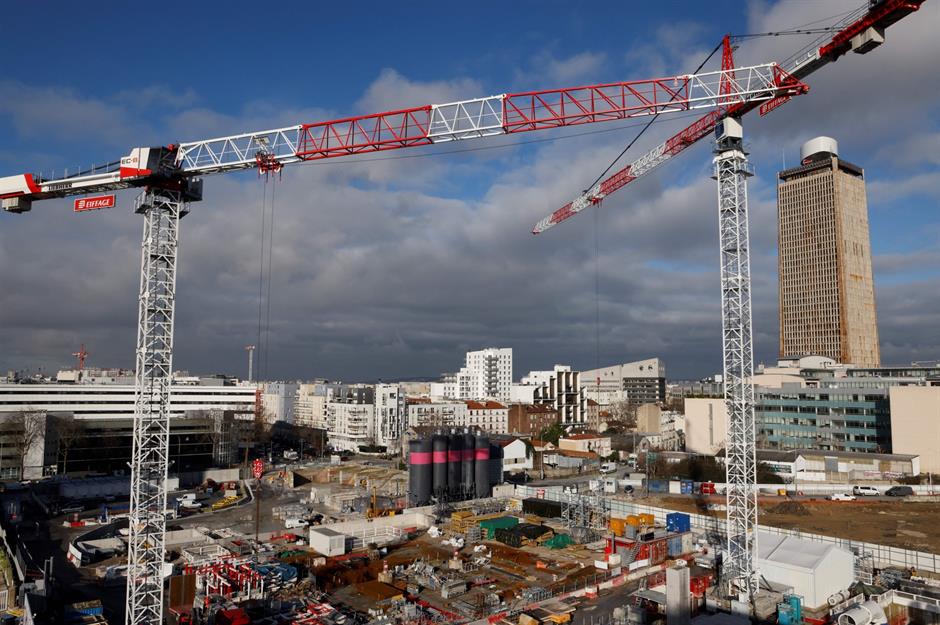
The project's main goal is to improve connections between the inner and outer rings of the city. Currently, Paris’ metro system largely services its city centre. Once all these new lines are completed, a 47-mile (76km) ring will connect its outer suburbs and substantially reduce journey times.
Cost estimates for the Grand Paris Express have more than doubled since 2010 to an estimated $45 billion (£36bn/€42.5bn). However, the French government expects the new infrastructure to generate as much as $106 billion (£84bn/€100bn) extra in GDP. The eyewatering cost could be worth it in the end.
Hinkley Point C, UK: $58 billion (£46bn/€55bn)
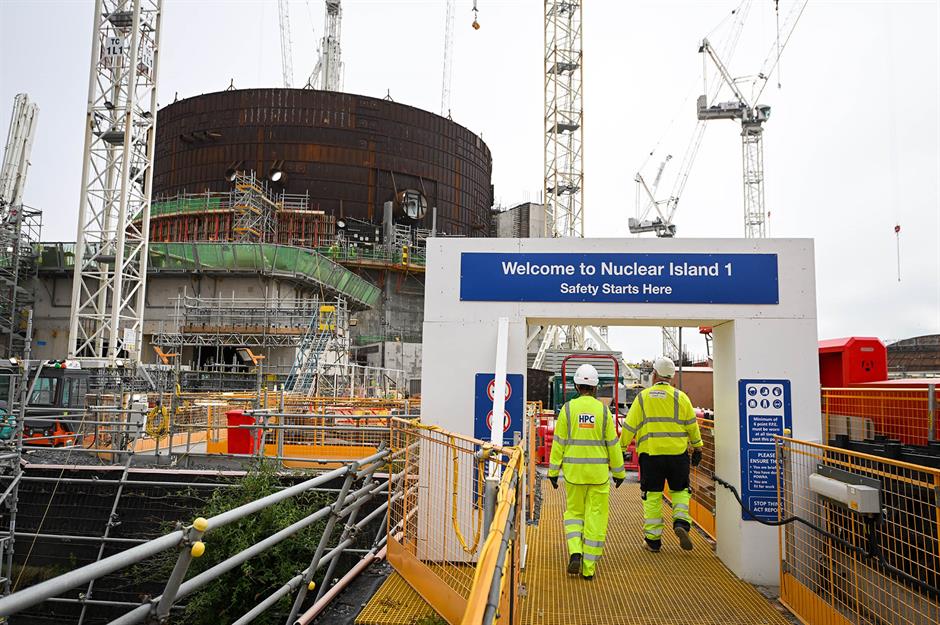
The first nuclear plant to be built in the UK in almost 30 years, Hinkley Point C will generate enough electricity to power approximately six million homes. However, its skyrocketing price tag has made it one of the most expensive megaprojects in Europe.
Approved by the UK government back in 2016, the construction cost at that time had been set at $22.8 billion (£18bn/€21.5bn) with operations expected to start in late 2025.
Hinkley Point C, UK: $58 billion (£46bn/€55bn)
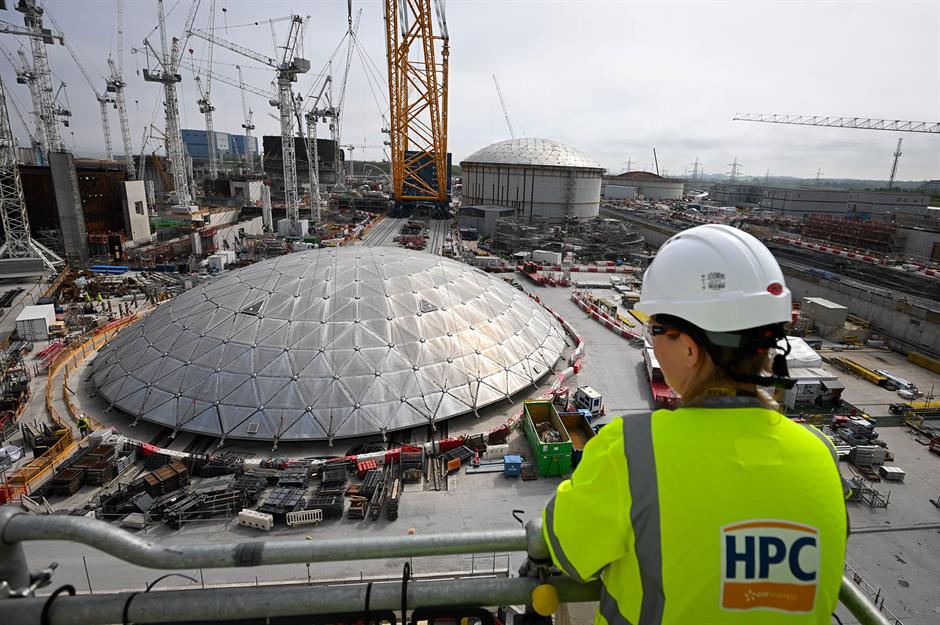
Construction seemingly started on schedule – the concrete bases of the two reactors had been finished, on time, by the summer of 2020. However, in January 2021, energy firm EDF announced that it didn't expect Unit 1 to start generating electricity until June 2026.
From there, the deadline continued to slip, with a delay to 2027 blamed on social distancing during the COVID-19 pandemic and labour shortages. EDF now says it could be 2029 or even 2031 before the plant starts working. Meanwhile, the final price is just as uncertain, with estimates suggesting it could be as high as $58 billion (£46bn/€55bn).
High Speed 2, UK: $70 billion (£55.4bn/€66.2bn)
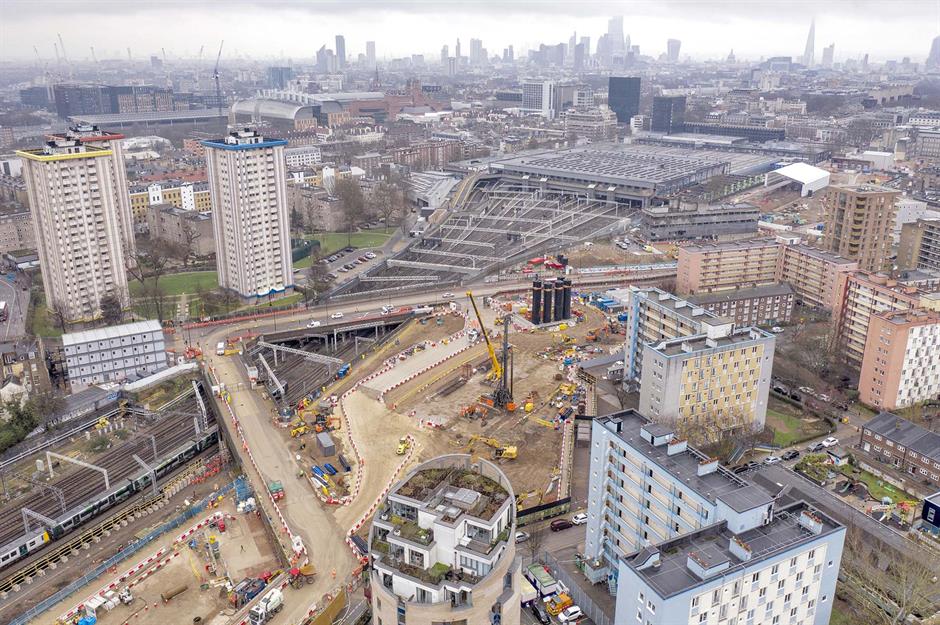
The biggest megaproject in Europe is also in the UK. It involves 140 miles (225km) of high-speed rail that's estimated to cost an eye-watering $416 million (£330m/€394m) per mile. But it’s not just the cost that makes this massive infrastructure programme so controversial.
High Speed 2, better known as HS2, was initially envisioned in 2009 as a 330-mile (530km) railway connecting London to Birmingham, Manchester and Leeds, with the first of three phases completed by 2026 at a cost of $41.7 billion (£33bn/€40bn). Protests broke out over the steep price tag and the project’s environmental impact on homes, businesses and historic woodlands. And that was just the beginning...
High Speed 2, UK: $70 billion (£55.4bn/€66.2bn)
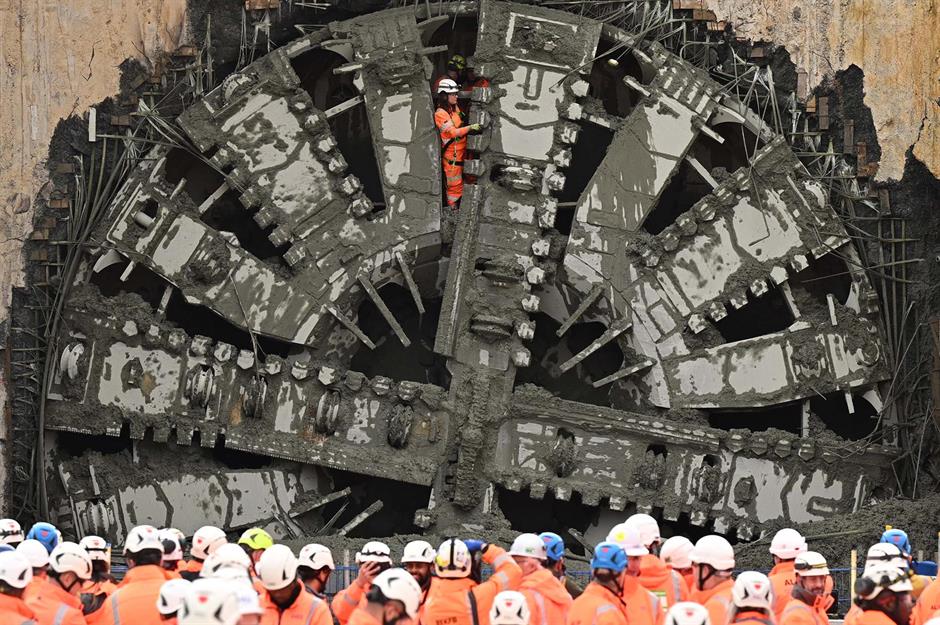
Barely a month after construction officially began in 2020, the cost had already rocketed to $134 billion (£106bn/€127bn), and the completion date of phase two had slipped to as late as 2040. Attempting to rein in the price, the UK government axed the connection to Leeds, hoping to keep costs closer to $121 billion (£96bn/€115bn). It wasn’t enough, and the Manchester portion of the project met its demise in October 2023. At the time, then-Prime Minister Rishi Sunak said this could save an additional $45.5 billion (£36bn/€43bn).
Construction is underway for what remains of the rail line, though there is still enormous uncertainty surrounding the project. The UK's new Chancellor of the Exchequer, Rachel Reeves, announced in her first budget that money would be guaranteed to build the line all the way to London’s Euston Station instead of ending at a northern suburb – an idea floated as a cost-saving measure – but made no comment on how much it would cost.
Government estimates for the total project cost are as high as $70 billion (£55.4bn/€66.2bn), and the opening date is unknown.
Now discover the world's most expensive skyscrapers, ranked
Comments
-
REPORT This comment has been reported.
Do you want to comment on this article? You need to be signed in for this feature
29 November 2024